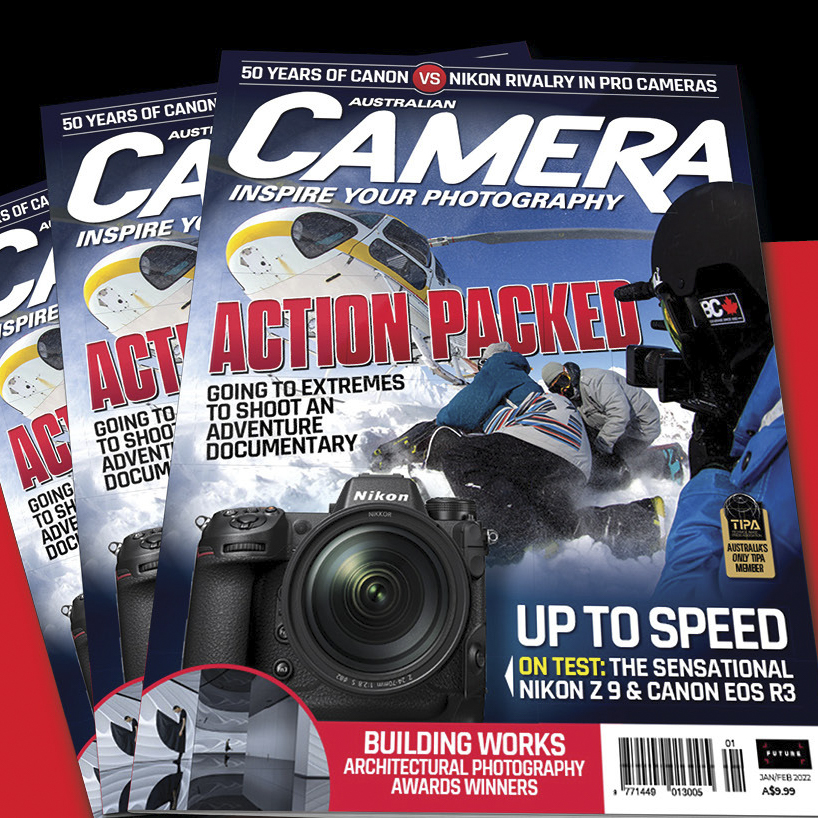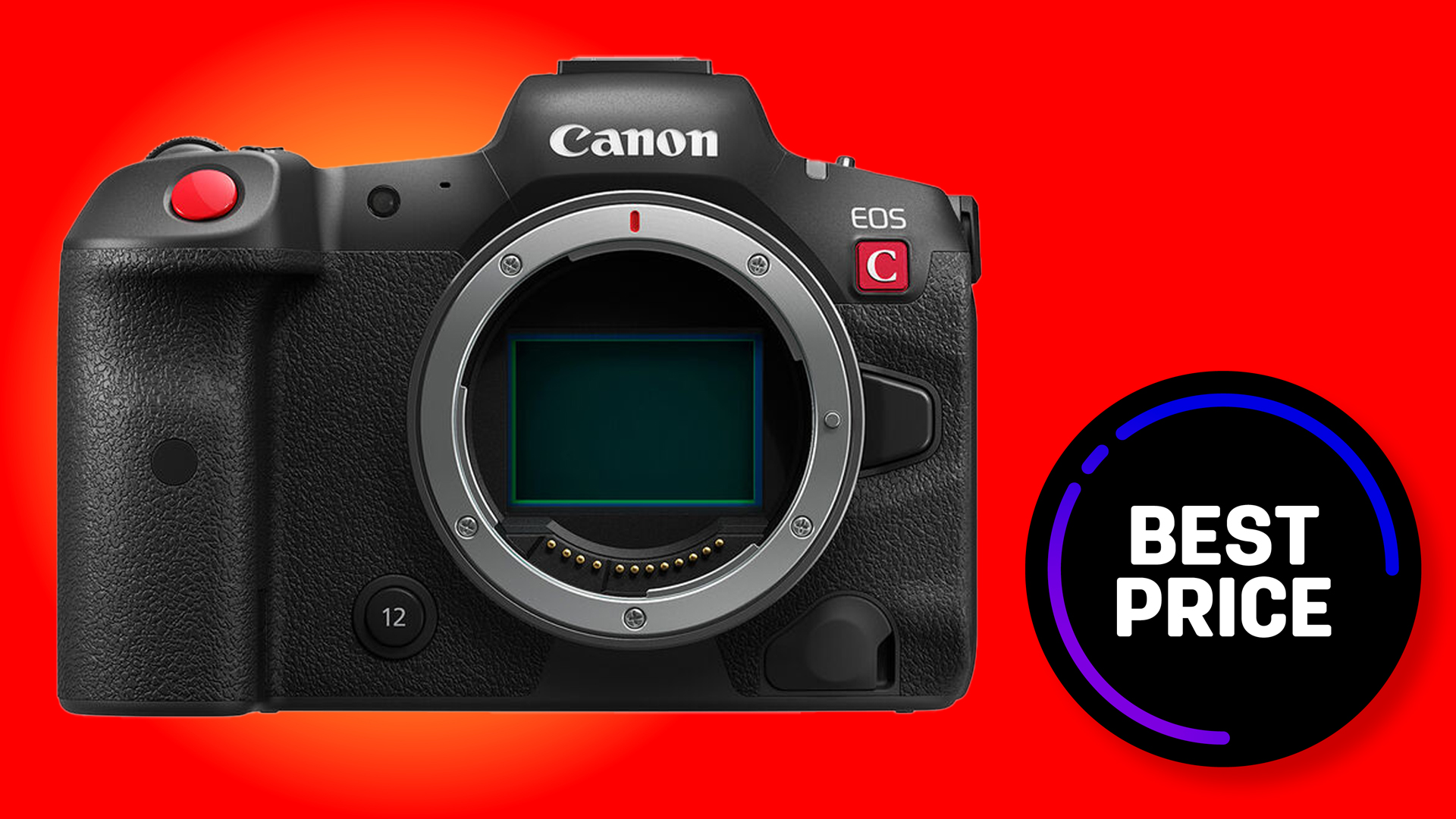Australian Camera Magazine Imaging Awards 2022 – all the winners
Celebrating the best of the best, here are the winning cameras and lenses in Australian Camera Magazine's annual awards
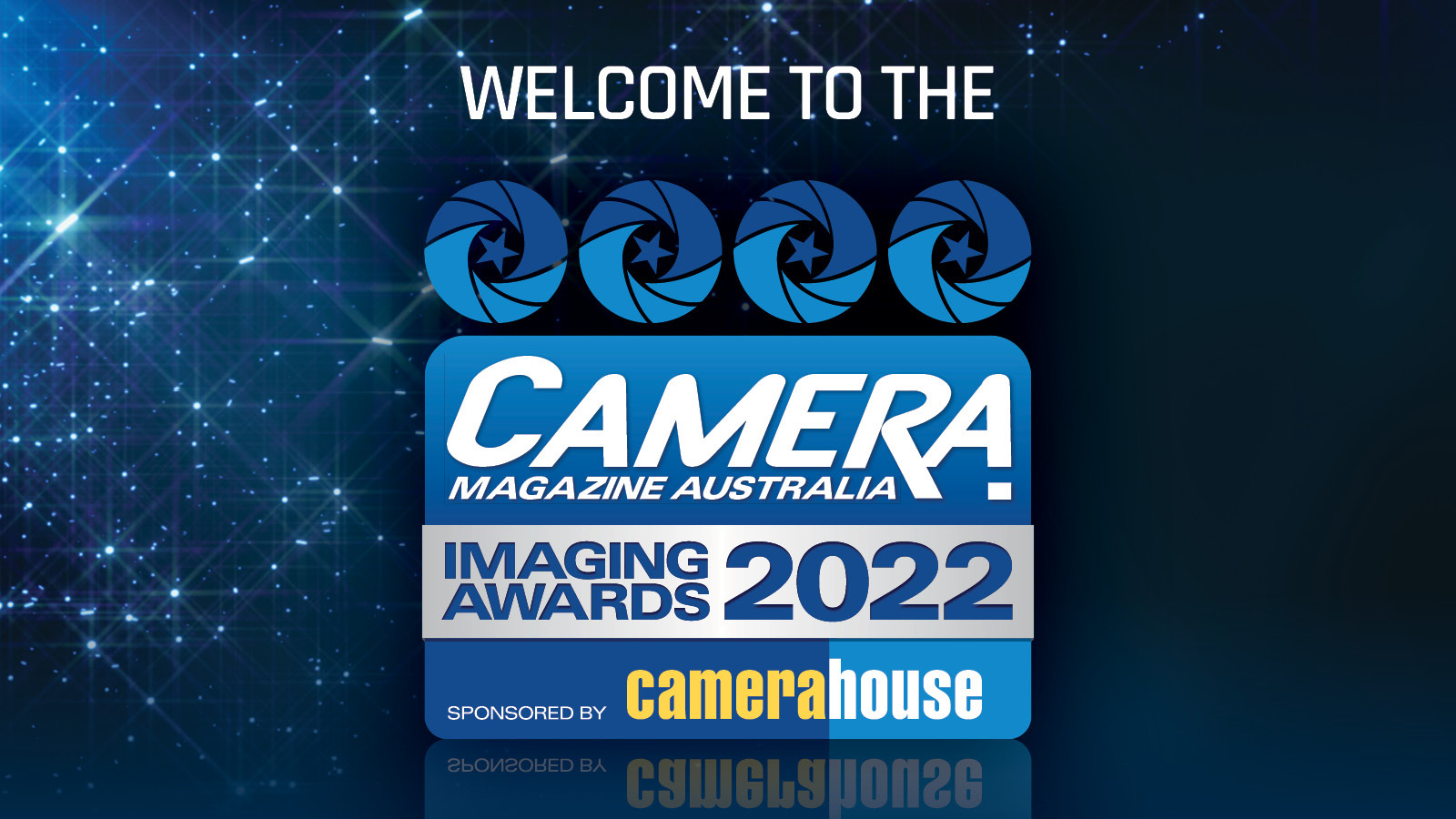
The annual Camera Magazine Imaging Awards recognise excellence in the design and execution of imaging products. Another year of Covid-related difficulties has had a number of impacts on the makers of imaging products, and yet the last 12 months has still delivered plenty of new and exciting stuff, giving us plenty to think about when it came to picking winners.
The knock-on effects of the ongoing Covid-19 pandemic have been many and varied, on both individuals and industries, and the photography world has experienced its fair share of related difficulties. Many working photographers simply couldn’t work, while lockdowns prevented everybody from travelling, attending events of any sort or even socialising with family and friends… all activities where you’d typically be taking lots of pictures. Reduced incomes – as a result of lockdowns forcing many businesses to close or operate at very reduced levels – have no doubt resulted in reduced spending on items not considered essential… such as a new camera or lens.
For the camera makers there have been disruptions to supply chains due to global issues with shipping caused by container ports either closing at various times or being short-staffed due to Covid outbreaks. This has also affected deliveries, not to mention causing a huge increase in the cost of shipping anything around the world. Covid outbreaks at factories have also interrupted manufacturing, causing shortages of critical components such as, in particular, computer chips.
With all this going on, it’s pretty amazing that anybody got anything done over the last 12 months, but it actually turned out to be a reasonably good year as far as new imaging products are concerned… perhaps not quite a vintage year, but not far off it. There were quite a few highlights and certainly enough going on to keep everybody interested, if not actually spending money.
According to Japan’s Camera & Imaging Products Association (CIPA), demand in 2021 was still quite a bit down on the pre-Covid 2019, but up a little overall on 2020, at least until August (which were the latest figures published when this article was compiled). However, the ongoing global chip shortage will have a bigger impact on the production volumes for the last third of 2021 (traditionally much higher in anticipation of Christmas sales), so it will be interesting to see where everything ends up compared to 2020, which actually finished the year stronger than it had begun.
What continues to be very obvious is that DSLR production is steadily declining (possibly by as much as 25% percent by the end of 2021 compared to 2020) while production of mirrorless cameras is, not surprisingly, steadily increasing… albeit destined to be the most impacted by year’s end due to the issues just outlined.
However, you don’t really need the numbers to see what’s happening in the interchangeable lens camera market. Just one new DSLR was launched during the period of eligibility for the Camera Imaging Awards 2022, and it is a further update of a model that’s close to seven years old. Additionally, both Canon and Nikon continue to delete older models from their line-ups without replacing them, and Sony has called time on its A-mount system, ending production of its last DSLR model, the A99 II (yes, it had a fixed mirror, but it still had a mirror which made it a reflex camera). In comparison, there were 14 new mirrorless cameras released during our period of eligibility (including Fujifilm’s two medium format models, but not counting the Nikon Z 9 which, in mid-October, had yet to be officially launched).
Get the Digital Camera World Newsletter
The best camera deals, reviews, product advice, and unmissable photography news, direct to your inbox!
Excellent though the Pentax K-3 III undoubtedly is, we decided not to have a DSLR category this year primarily because, with all the camera makers’ resources going into their mirrorless systems, there is no real innovation or development going on here anymore. We continue to maintain our four main categories for mirrorless cameras – Consumer, Enthusiast, Professional and Hybrid – and have reinstated the award for best medium format camera although, of course, this year Fujifilm is competing with itself here.
We’ve also re-organised our categories for lenses in recognition that, once again, just about all the activity is in the mirrorless sector. The categories for zooms and primes are retained, of course, but we’ve divided them again into those designed for full-frame sensors and those for cropped sensors (i.e. APS-C and Micro Four Thirds) given there are different design objectives inherent in both. The freedoms inherent in the mirrorless camera configuration are now being exploited in many interesting and innovative ways.
Not surprisingly, all four lens categories were hotly contested, but none more so than that for full-frame primes with contenders from Canon, Nikon, Panasonic, Sigma and Sony (which had a total of three models in the running). The bar is set very high here in terms of what’s being achieved with fast wide-angles, even faster standard lenses and close-focusing macro lenses. What’s happening with mirrorless lenses is arguably the most exciting part of the camera world at the moment.
The impact of the Covid pandemic is not over yet and it’s very likely that 2021 will see an overall decline globally in camera production and sales, but 2022 represents the light on the horizon and if product development continues as it has even in the most trying of times, there will be much to look forward to.
Eligibility
The period of eligibility for the Camera Magazine Imaging Awards traditionally ran from 1 October to 30 September, but this year we made a slight adjustment to extend it to 31 October, primarily to accommodate a number of significant new announcements (assuming we could actually get our hands on the products). Next year, the plan is to simplify matters and simply run for the calendar year, announcing the winners in the January/February issue. With the Photokina exhibition no longer in the picture, we don’t have to consider what was once traditionally the launch pad for many big new product announcements.
Another requirement for eligibility is that a product must be available for purchase by the time we announce the winners (obviously also extended to 31 October this year). This means being physically available at retail outlets in the country’s major metropolitan centres as well as from online sellers. This is simply because, firstly, we – or one of our affiliates – actually have to be able to evaluate the product and, secondly, if you’re sufficiently enthused by a winner to want to buy it, it’s frustrating if you have to wait. Or you’ll lose patience and buy something else, in which case nobody wins.
We spend the whole year compiling long lists of potential winners and these are fine-tuned as we go along, including after we’ve been involved with the annual TIPA World Awards judging earlier in the year. All the eligible products in each category are evaluated on a number of design, operational and performance criteria. The key consideration is just how effectively has the design brief been met and whether the product delivers everything that’s promised, including in all performance areas.
Price is also taken into account, but isn’t necessarily a deciding factor as some products would still be winners even if they cost a whole lot more because they’re just so much better than anything else in the category. That said, some products represent such exceptional value-for-money that the price simply can’t be ignored.
Each of the judging criteria carries a point score. After we’ve arrived at shortlists of the top-scoring products in each category, we then take a look at the more subjective elements such as the styling, the user experience and the many other, often small, details that endow a product, particularly cameras, with emotional appeal. These characteristics can – and often do – make all the difference in a final judgement and it’s a very complete product indeed that appeals to both the heart and the head.
And the winners are...
Consumer Mirrorless Camera
Consumer mirrorless camera winner: Nikon Z fc
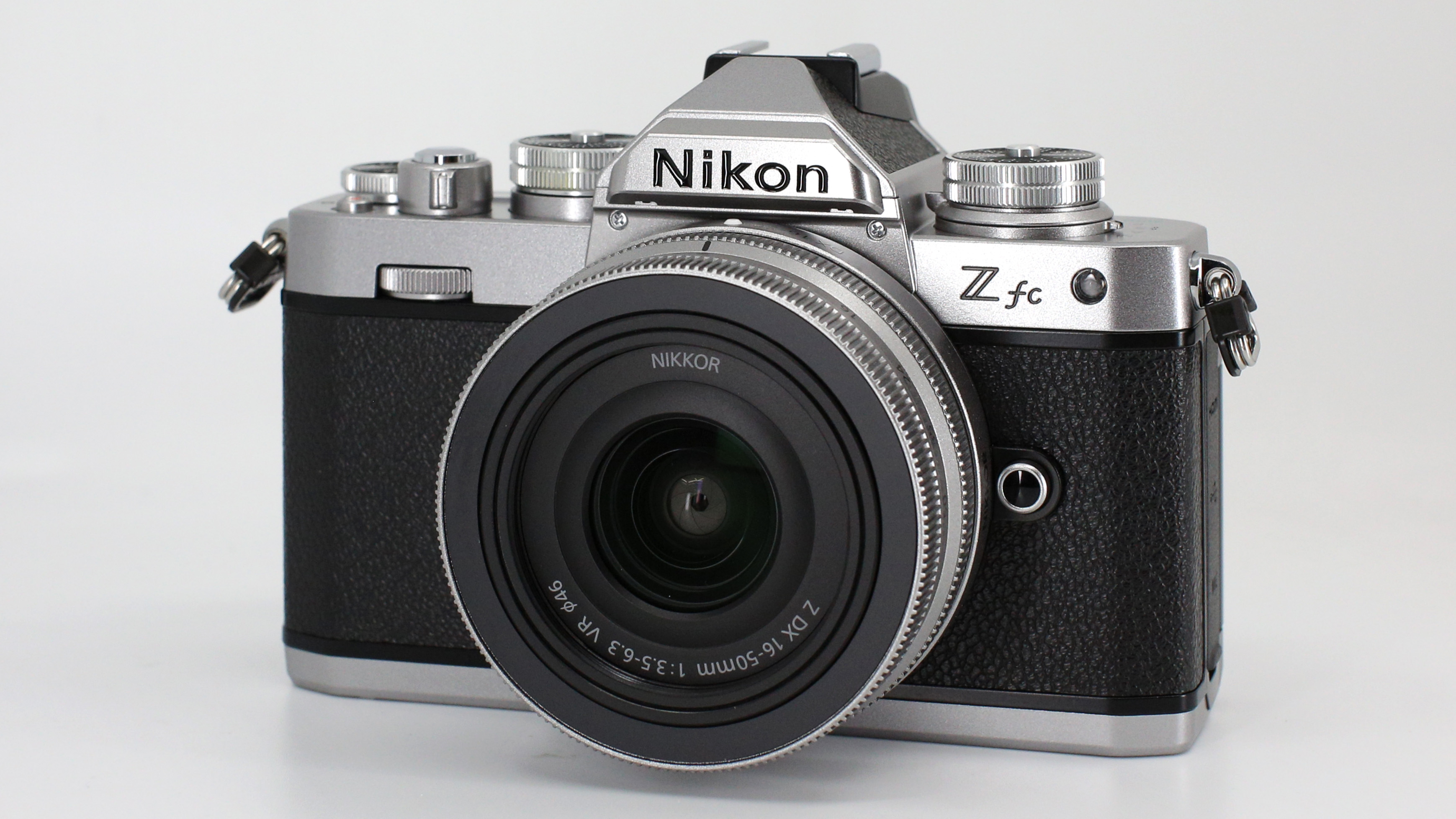
With Nikon obviously pouring a lot of resources into its full-frame mirrorless system, the APS-C offshoot – designated Z DX in Nikon’s parlance – was at risk of becoming a bit neglected. Consequently, the Z fc is a stroke of genius… and on a number of levels. On the inside it’s the mild-manner Z 50 (which, coincidentally, won this category last year), but on the outside it’s a highly desirable piece of retro-styling inspired by the classic FM/FE series of 35mm SLRs. For good measure, Nikon has thrown in a series of limited edition colours that add a bit more excitement. It all comes together to create a highly desirable camera that does retro brilliantly, leveraging all the ergonomic delights and the efficiencies of the mirrorless camera configuration.
Not only does it look gorgeous, but it works superbly well too, underpinned by the core competencies of the Z 50 on which it is based. Using the APS-C format ensures that the Z fc’s size is right in terms of paying homage to its 35mm ancestors, and consequently its far better proportioned than Nikon’s last retro-style digital camera, the Df full-frame DSLR. Operationally, the z fc blends its classic dials with the efficiencies of the digital era – front and rear input wheels, a navigational keypad, and a tilt/swing monitor panel with touch controls. Plus, of course, you get all the contemporary conveniences such as Wi-Fi and Bluetooth LE connectivity, in-camera battery charging and powering, and plenty of scope for control customisation, including the very handy i-Menu. All this is topped off by a strong performance, particularly in terms of the out-of-the-camera JPEGs, which is what the vast majority of Z fc owners will be using. As it happens, Nikon’s colour science is on a par with Fujifilm’s, achieving a deftly-tuned balance between saturation and realism.
While Nikon’s intention with the Z fc – at least partially – is to attract a younger demographic who find the whole retro thing fashionably cool, there’s much more to the camera than that. There’s sufficient substance behind the style to make the Z fc appealing to the more experience and enthusiastic shooter… and if you’re old enough to remember the good old days of the FM/FE and FM2/FE2, then it’s nigh on irresistible.
Read more in the Nikon Z fc review
Enthusiast Mirrorless Camera
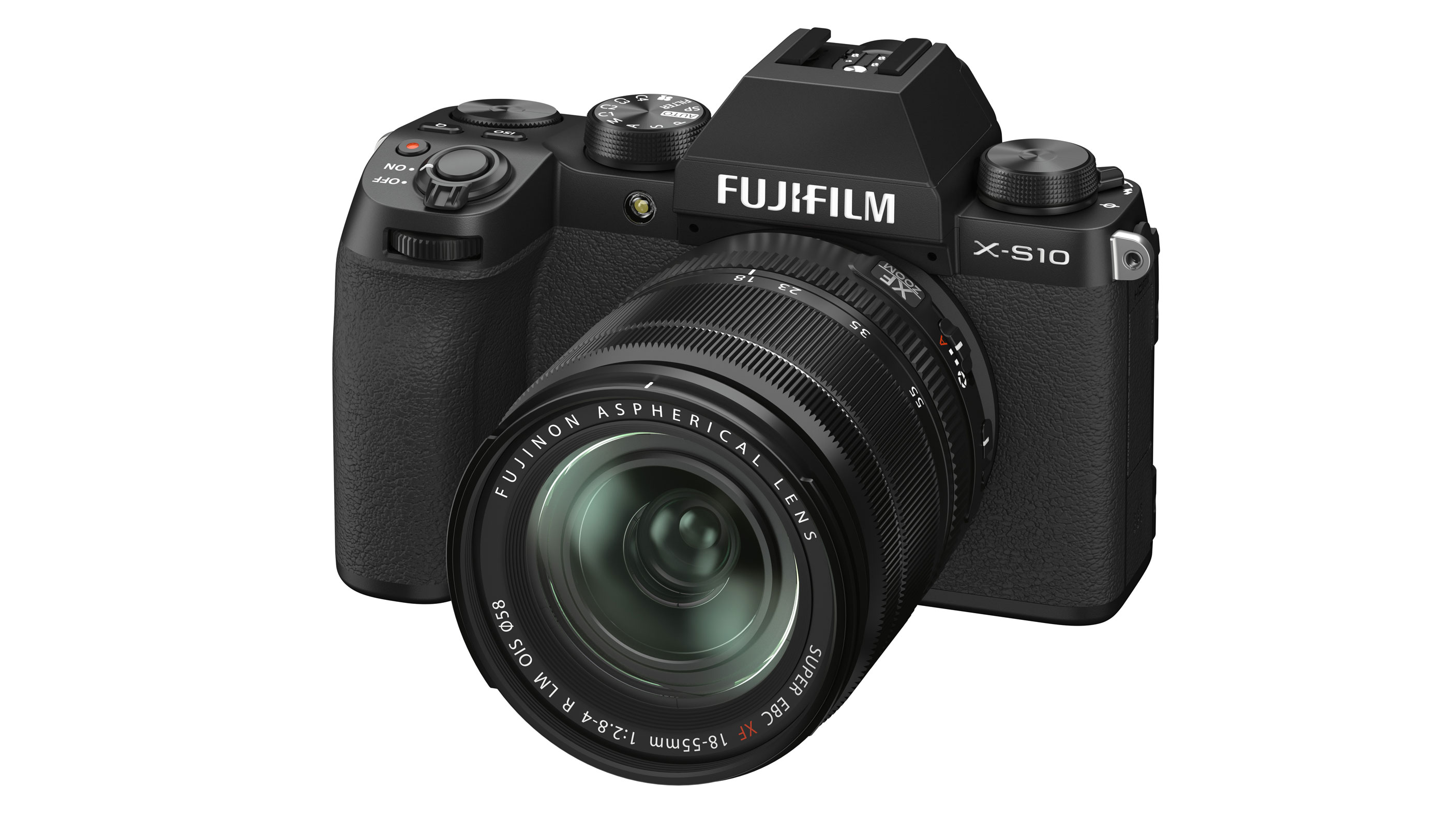
Enthusiast mirrorless camera winner: Fujifilm X-S10
A little ironically, given Nikon’s incursion into traditional Fujifilm territory in the previous category, it’s the latter’s stepping away from a more classically-themed styling that has produced a winner here. The X-S10 is unlike any other Fujifilm X-mount camera we’ve seen before, and its feature set looks a bit curious at first – a mix of entry-level and high-end, giving the impression that the design team might not have all been talking to each other.
All this changes in practice though, because the X-S10 excels in its ergonomics and operational efficiencies, the functionality balances wants and needs very effectively, and the performance is on a par with its top-of-the-range siblings – the X-S10 is essentially a lot of the X-T4 repackaged in an X-T30 size body, but with a more conventionally contemporary control layout. It gets all the important stuff from the X-T4 – latest-generation X-Trans sensor, processor and 425-point autofocusing – along with in-body image stabilisation (using a dedicated, more compact module) and some extra video capabilities compared to the X-T30. Additionally, it has the full suite of Fujifilm X-mount in-camera processing functions, including 18 Film Simulation profiles and the additional tweaks available via Grain Effect, Colour Chrome Effect and Colour Chrome Effect Blue. On the video side, there’s uncropped 4K DCI and UHD recording with a bit rate of up to 200 Mbps, a 10-bit 4:2:2 colour output via HDMI, F-Log, slow-mo Full HD frame rates and time code support.
The compact body has no weather sealing, though, and only a single memory card slot, which could be considered anomalies on a camera that’s otherwise more high-end than anything else. This is where the price tag comes into play, because for the amount of money you’ll be asked to hand over, the X-S10 represents exceptional value. The feature set has clearly been carefully worked out to minimise any compromises and, indeed, for many potential users, it’s the more accessible performance that’s really the key attraction of this camera. The more conventional layout gets you to where you want to be much more easily, and you still get the same brilliant results as the X mount flagship.
Read more in the Fujifilm X-S10 review
Professional Mirrorless Camera
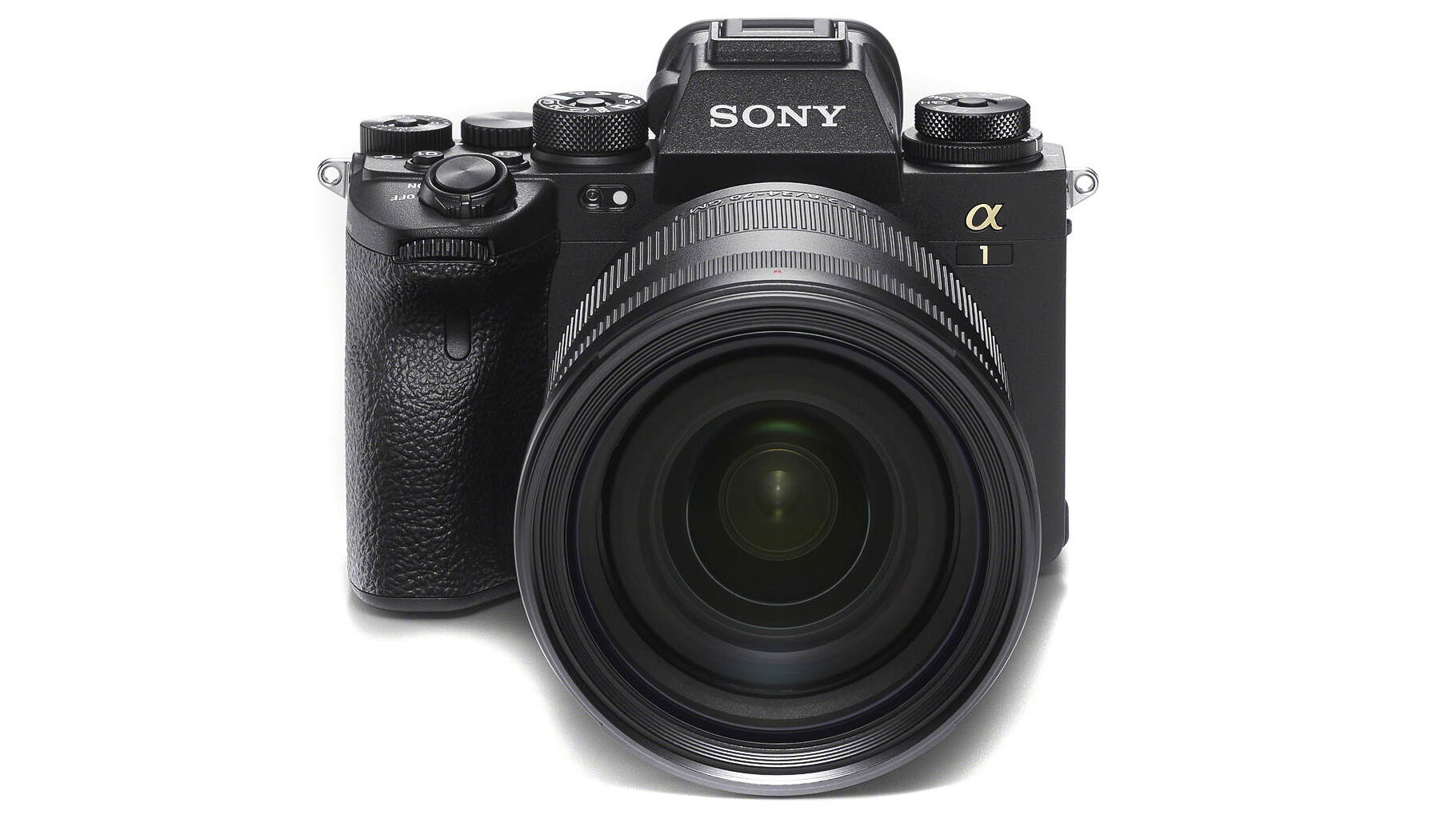
Professional mirrorless camera winner: Sony Alpha 1
The Alpha 1 is impressive on so many levels, not the least that Sony still manages to build a pro-level, full-frame mirrorless cameras that are so compact. And it is extremely solidly built too, with a fully weather-sealed magnesium alloy body. The camera’s headline acts tell the story – a 50.1MP sensor with continuous shooting at 30fps, and 4K UHD video recording at 120fps with 10-bit 4:2:2 colour. However, the Alpha 1 can also shoot 8K video internally at 30fps with 10-bit 4:2:0 colour sampling. A passive heat sink arrangement enables video recording at high resolutions and bit rates for durations of up to an hour. There’s the fabulous 1.6cm and 9.44-million dot OLED EVF from the A7S III, but upgraded further with a refresh rate of 240fps – a world first. And even at 30fps, you still get full AF/AE adjustment (carried out at 120 calculations per second), with a no-blackout viewfinder too.
The Exmor RS CMOS sensor combines both backside-illuminated and stacked design elements to optimise both sensitivity and speed. The dynamic range is 15 stops for both stills and video. In-body image stabilisation gives up to 5.5 stops of correction for camera shake and five-axis movement when combined with optically stabilised lenses. An ‘Active Mode’ adds electronic stabilisation to enable smoother hand-held video shooting. Sensor shifting is also used to deliver Pixel Shift Multi Shooting which generates 16 images that merge into one with a resolution of, ahem, 199MP.
There’s clever dual ‘multi slot’ memory card compartments that both support CFexpress Type A and UHS-II speed SDHC/XC, so you can mix and match as desired. For the first time on a Sony A-series camera there’s the option of a lossless compressed RAW capture mode, joining the lossy compressed and uncompressed modes. In addition to JPEGs, the Alpha I also captures 10-bit HEIF images with higher definition and a wide colour gamut. Additionally, there’s a ‘Light’ compression setting for both JPEGs and HEIFs which gives a smaller file size to allow for the faster delivery of sports and news pics from the camera.
The mechanical shutter is a new assembly using carbonfibre blades, and a dual drive system employing both a spring and electromagnetic actuator for both lightness and durability. Flash sync is possible up to 1/400 second. Furthermore, with the electronic shutter (specifically the ‘electronic first curtain shutter’) flash sync is now at up to 1/200 second. Autofocusing is the same updated hybrid system as was introduced with the A7S III, using 759 phase-detection points and 425 contrast-detection to give 92% frame coverage and EV -6.0 low-light sensitivity. The AI-based object-recognition tracking has settings for humans, animals and birds.
Additional video capabilities include a 16-bit RAW video output (at 4K/60p) over HDMI, which is a full-size Type A connector. Wi-Fi connectivity supports both the 2.4 and 5.0 GHz bands, and there’s also a built-in 1000BASE-T LAN connector.
Read more in the Sony A1 review
Digital Hybrid Still/Video Camera

Digital Hybrid Still/Video Camera winner: Panasonic Lumix GH5 II
For a camera to truly qualify as being “hybrid” it has to be as capable as a tool for photography as it is for videography, both applications equally well served with their respective functions and specifications. The original Lumix GH5 really set the standard here, with the GH5S being considered more video-orientated although it is also a very competent stills camera. The upgrades to the GH5 II could also said to be more “video orientated”, but they’re essentially aimed at keeping the camera competitive, but there are also improvements that benefit the photographer, thus taking the ‘hybrid-ness’ collectively up a notch or two.
At the platform level, the Micro Four Thirds sensor size ticks a lot of boxes for both photographers and video-makers alike, translating into a more compact camera and some handy ‘free’ telephoto power courtesy of the 1.97x focal length magnification factor. The GH5 II is still a bit on the bulky side for an M43 camera, but in the light of what we’ve been seeing in full frame, the Mark II model really isn’t all that much of a handful… in fact, it’s well sized for both hand-held shooting or using in a video rig. The original’s ergonomics were exemplary so they’re largely unchanged on the updated camera, but the user interface (essentially the same as that of the Lumix S bodies) is much improved, so it’s better designed and more logical in its implementation, further enhancing the operational efficiencies.
A later generation processor also enhances the Mark II camera’s functionality; driving improvements to the image quality, the AF system and, of course, the video capabilities. Additionally, the in-body image stabilisation now gives up to 6.5 stops of correction for video shake, and a bigger buffer memory greatly extends the burst lengths with continuous shooting. The key update to the AF – still Panasonic’s contrast-detection based depth-from-defocus system, but now operating at 480fps – is AI-based ‘deep learning’, so the subject detection for humans now identifies faces, eyes, heads and bodies; while that for animals can recognise dogs, cats and birds. On the video side, the big ticket items are 10-bit 4:2:0 colour 4K recording internally at 50/60p with no cropping or restrictive recording time limits, 10-bit 4:2:2 colour externally and simultaneously, All-Intra compression with 4K at 24/25/30 fps (giving a bit rate of 400 Mbps) and V-Log/V-LogL already installed rather than an extra cost.
It all adds up to a camera that’s designed to just get on with the job and do it well… both comfortably and efficiently.
Read more in the Panasonic Lumix GH5 II review
Digital Medium Format Camera
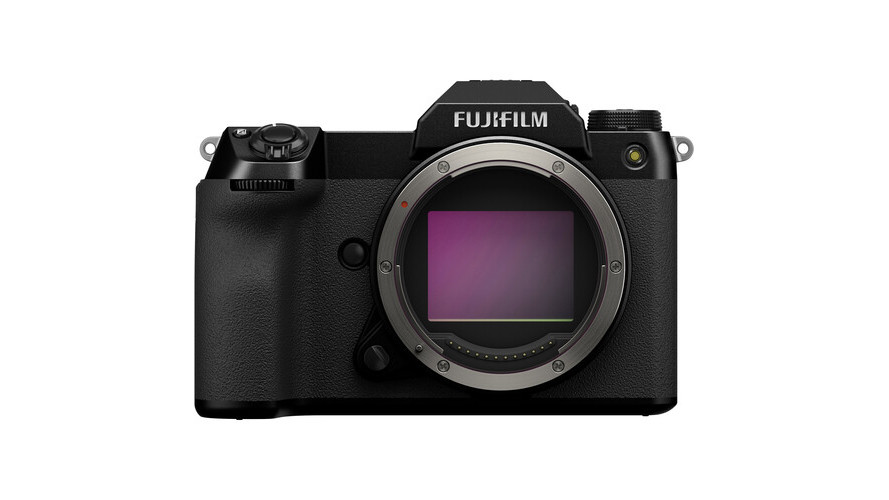
Digital Medium Format Camera winner: Fujifilm GFX 100S
This year, Fujifilm was completing with itself in this category; the GFX 100S and GFX 50S II presenting quite different propositions even though they have a lot in common. Of course, Fujifilm sees these cameras primarily as competitors in the full-frame mirrorless sector and, what’s more, it chooses to call them “large format”, but regardless the GFX system is medium format based on what’s commonly called the “33x44” size sensor (more precisely, 32.9x43.8 mm in imaging area).
It’s impossible to ignore what Fujifilm has achieved with the 102 megapixels GFX 100S… a camera that sets so many new standards in digital medium format. The original GFX 100 was a game-changer in terms of making so much resolution so accessible and affordable, but the 100S takes things a whole lot further. It’s smaller, lighter, more affordable and generally more capable in quite a few areas. Size wise, it’s in the ballpark with the beefier full-frame cameras – such as Panasonic’s Lumix S1 series models – while the price tag puts it at the top of this category. But, hey, we’re talking 102 megapixels of resolution here at under $10,000, and in a weather-proofed camera that’s easy to hand-hold and has in-body image stabilisation to further help you in low-light situations.
The IBIS delivers up to six stops of correction for camera shake, and it’s across five axes when working in conjunction with the OIS-equipped GF series lenses. Sensor shifting is also used to deliver 16-shot RAW capture to create a 400MP file with full RGGB colour at every one of them.
Additionally, you get pretty much everything that’s on the X-T4 in terms of in-camera processing functions – a multiple exposure facility, an intervalometer, focus bracketing and the ‘Lens Modulation Optimiser’ corrections. The GFX 100S also has pretty much all the same camera systems, including 425-point hybrid phase/contrast detection with the ‘AF-C Custom’ menu options for fine-tuning focus tracking. AI-based object recognition hasn’t arrived here yet, but overall the AF is still fast and reliable. Now with a fixed EVF, but still using a three-way tilting monitor with touch controls, a large top-panel info display and plenty of scope for customising the external controls, the GFX 100S flies just like the full-frame cameras it’s competing with… except it isn’t really. None of them can match the bigger sensor’s combination of ultra-high resolution and a high signal-to-noise ratio which, together, delivers a particular definition, depth and tonality. In the mirrorless camera world, it can’t be matched for image quality, but the fact that it does so many other things so well make the GFX 100S an out-and-out winner.
Read more in the Fujifilm GFX 100S review
Prime Lens Full Frame
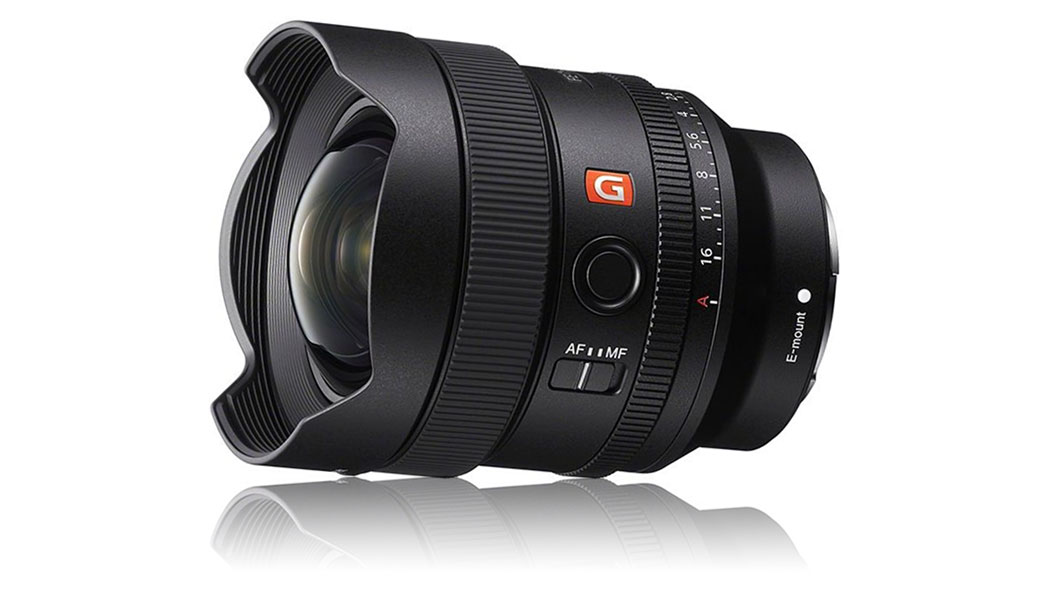
Prime Lens Full Frame winner: Sony FE 14mm f/1.8 G Master
Attaining G Master performance levels with a fast ultra-wide for full-frame sensors is no mean feat of optical design and engineering. And what’s more, Sony has managed to make the 14mm f/1.8 GM reasonably compact and lightweight… a compelling testimony to what’s now possible without having to worry about clearing a reflex camera’s mirror. Furthermore, with a price tag of just a tad over two grand, the Sony ultra-wide really isn’t all that expensive for a lens with these remarkable capabilities.
Thanks to the superlative optical performance, you can really make the most of the expansive, 114º angle-of-view… there’s no distortion and the centre-to-corner uniformity of resolution is astounding even at f/1.8. The corner sharpness when shooting wide-open needs to be seen to be believed – we haven’t seen any other ultra-wide perform so well here, ever. Chromatic aberrations – both lateral and longitudinal – are very well controlled and, if astrophotography is your thing – so is sagittal flare (a.k.a. coma).
Not surprisingly, the optical construction is a work of art in itself – six of the 14 elements being special to provide the high level of correction for distortion and aberrations. Two are Sony’s special brew XA types – short for eXtreme Aspherical – including the high curvature front element, which is impressive even just to look at. Sony’s Nano AR Coating II anti-reflection multi-coatings are applied to effectively banish ghosting and flare. The physical construction incorporates full weather sealing with fluorine repellent coatings applied to the exposed surfaces of both the front and back elements. Focusing is performed internally using a pair of Sony’s XD (standing for eXtreme Dynamic this time) linear motors for speed, smoothness and silent operation complimenting all the latest developments in AF functionality in the Alpha series cameras (especially for tracking).
The FE 14mm f/1.8 GM is an exceptional lens by any measure and quite possibly as close to perfect as is realistically achievable with fast ultra-wide prime. Yep, it’s that good.
Zoom Lens Full Frame
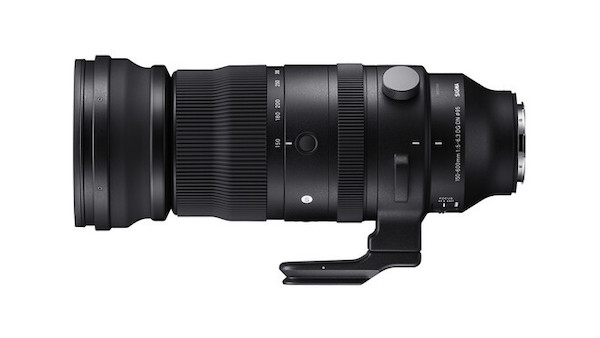
Zoom Lens Full Frame winner: Sigma 150-600mm f/5.0-6.3 DG DN OS Sports
Sigma’s 150-600mm telezooms for DSLRs – there have been a number of versions – provided supertelephoto capabilities in a manageable package at an affordable price. Now there’s been a complete redesign to take advantage of what’s possible with a lens created specifically for mirrorless cameras.
The 150-600mm f/5.0-6.3 DG DN OS is part of Sigma’s Sports line and is available in the L and FE full-frame mounts. There’s a new optical design which means some physical changes including a shorter barrel length compared the DSLR version – reduced by 26.6mm – and a massive 760g reduction in weight. This makes the 150-600mm even more manageable for hand-held shooting, assisted by the optical image stabilisation that gives up to four stops of correction for camera shake. Mind you, at 2.1 kilograms, this is still a reasonably heavy lens and a tripod-mounting collar isn’t there just for show.
The new optical design comprises 25 elements in 15 groups, including six special types – two with extra-low dispersion (ED) characteristics and four of Sigma’s FLD or F Low Dispersion types which have ultra-low dispersion capabilities similar to fluorine-type elements (which are very expensive to make, hence the devising of an alternative glass formulation). These special elements collectively correct for both longitudinal (or axial) chromatic aberration and lateral (or magnification) chromatic aberration. Sigma’s newer Super Multi-Layer Coating is used to minimise ghosting and flare.
Sigma has also taken the opportunity to give the 150-600mm a new autofocusing drive using a stepping-type motor for increased speed – primarily to match improvements in AF tracking – and quieter operation. The new drive works in conjunction with a high-precision magnetic sensor to give more accurate positioning. The minimum focusing distance is shortened to 58cm at 100mm, giving a maximum reproduction ratio of 1:2.9 (or a little over half life size), meaning this lens also has useful close-up capabilities.
As you’d expect, the external construction is weather-sealed and the zooming collar offers the choice of push-pull or rotational operation, take your pick. Additionally, you can also adjust the torque to balance feel and controllability (or to minimise zoom creep).
There’s a lot of things going on optically with a telezoom like this and Sigma has worked hard to deliver the sort of performance required for applications such as wildlife and nature photography. Overall sharpness is good across the entire focal range and the lens is well-corrected for both distortion and chromatic aberrations. Fast AF, effective stabilisation and comfortable handling also add to the versatility and usability… and it’s a whole lot of lens for your money too.
Prime Lens Cropped Frame
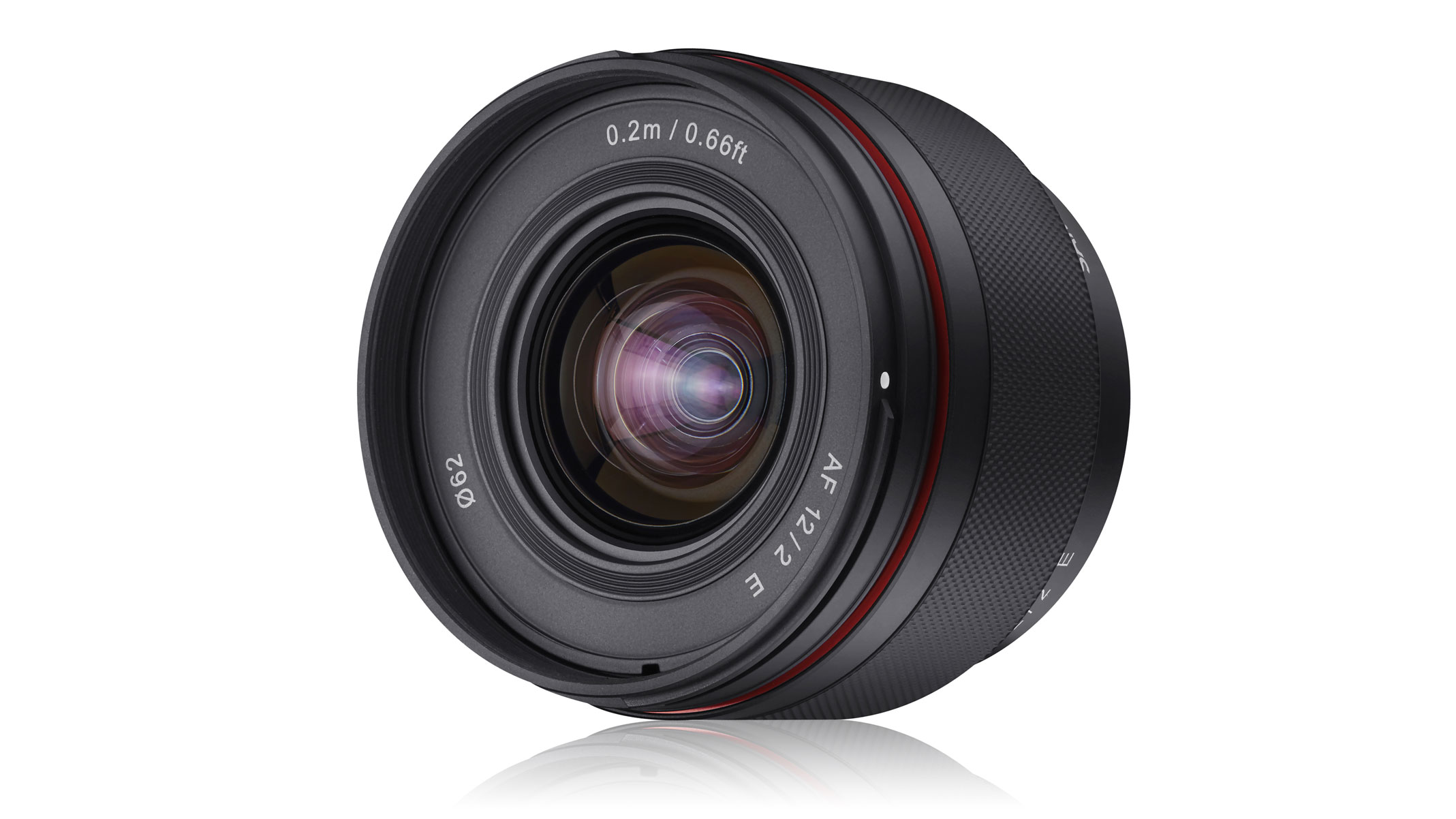
Prime Lens Cropped Frame winner: Samyang AF 12mm f/2.0 E
For a lens maker who built its solid reputation on excellent manual focus models, Samyang has found its feet in the autofocus world without too much difficulty. Indeed, its 12mm f/2.0 ultra-wide prime for APS-C format sensors is a brilliant example of a popular MF design reincarnated as an AF lens.
For starters, with so much emphasis on the full-frame mirrorless systems, a new APS-C lens from an independent maker is cause for some celebration. That it’s also a class Samyang lens in terms of its compactness, performance and sheer value for money warrants letting off a few more party poppers. It’s the owners of Sony’s E-mount cameras – such as the A6000 series – who get to party the most, however, as this is the only fitting option thus far. The effective focal length on APS-C is 18mm and Samyang has settled on a maximum aperture of f/2.0 as a good balance of brightness and shallower depth-of-field with the lens dimensions and affordability. At f/2.0 you can shoot at lower ISO settings and/or faster shutter speeds for longer as light levels drop.
The angle-of-view is 99.1º, which means this is a great lens for landscapes, street scenes, travel and, of course, astrophotography. In fact, Samyang describes it as being “astrophotography-centric”. For the record, it is the widest-angle autofocus prime for APS-C and, ipso facto, Sony E mount cameras.
It’s suitability for shooting in the great outdoors, day and night, is enhanced by its size and weight – the latter at a mere 213g – and a weather-sealed construction that includes a protective glass over the rear element. The AF lens has more contemporary styling than its MF predecessor – including a matte finish and diamond-pattern textured grip on the focusing collar – and the barrel tubes are GRP which gives lightness without unduly compromising toughness. The lens mount is stainless steel and surrounded by a weather sealing gasket so Samyang is obviously making doubly sure by adding the protective glass. On the inside, the optical construction employs 12 elements in 10 groups, with five of them being special types to deal with distortion and both chromatic and spherical aberrations while optimising sharpness across the frame. Flare and ghosting is countered by Samyang’s Ultra Multi Coating anti-reflection coatings… in this case, a total of 14 layers.
Read more in the Samyang AF 12mm f/2.0 E review
Zoom Lens Cropped Frame
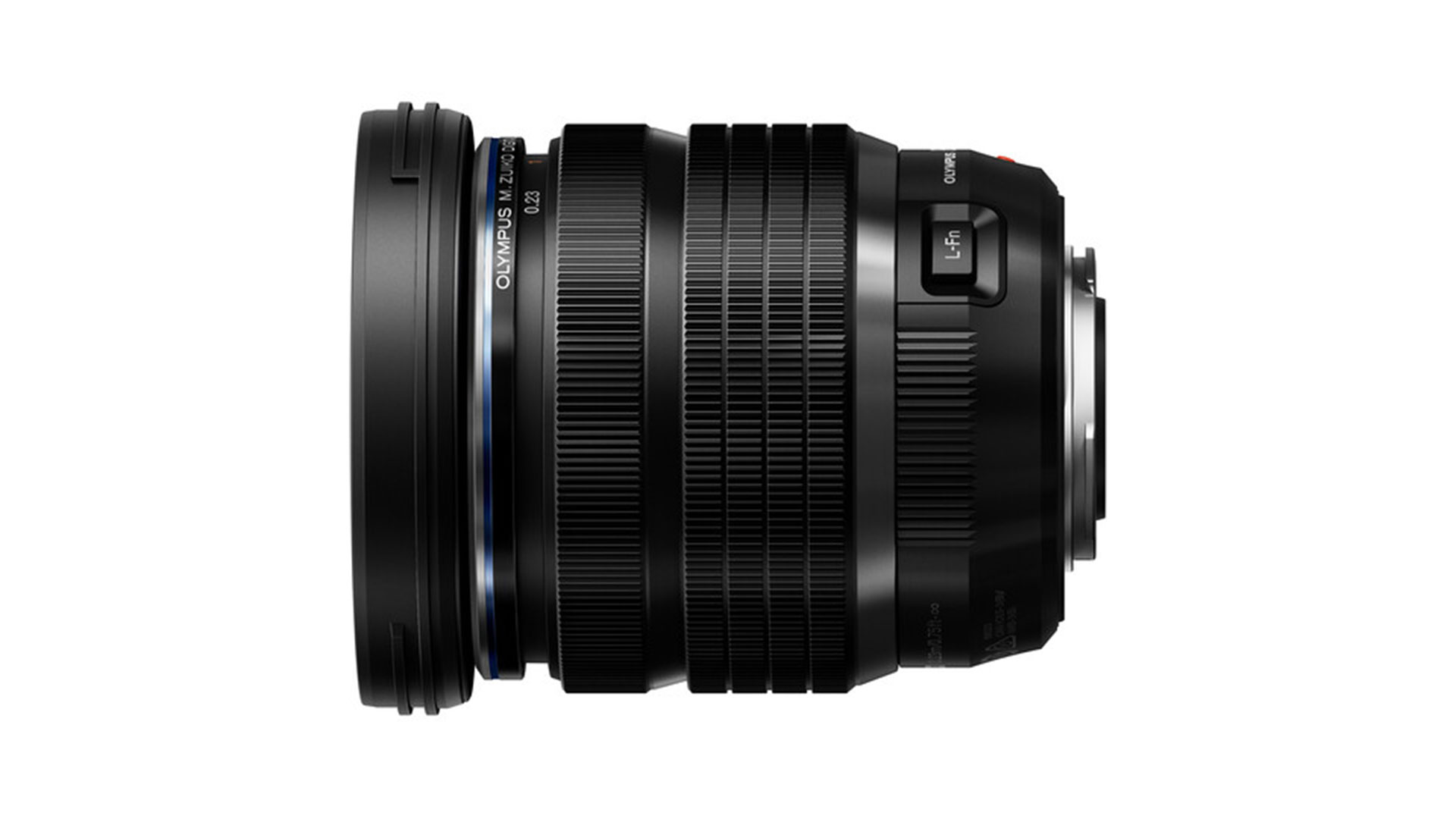
Zoom Lens Cropped Frame winner: Olympus M.Zuiko Digital ED 8-25mm f/4.0 PRO
The winner of this category last year was the M.Zuiko Digital ED 100-400mm f/5.0-6.3 IS, and it’s now Olympus’s exploits at the other end of the focal range that have collected the gong.
The M.Zuiko Digital ED 8-25mm f/4.0 PRO – equivalent to 16-50mm – joins Olympus’s PRO series of higher-performance lenses, and it’s yet another demonstration of what can be achieved with the mirrorless camera configuration. An ultra-wide to standard zoom is quite a challenge in optical terms, but the 8-25mm is consequently very versatile in its applications, ranging from landscapes to portraiture. Olympus has opted for a workable balance of maximum aperture, lens size and, of course, affordability while also maintaining optimum image quality across the focal and focusing ranges. A maximum aperture of f/4.0 is the key here, and it’s quite acceptable these days given the better high ISO performance of both the latest Olympus and Panasonic M43 camera bodies.
The hugely complex optical construction reveals the lengths that Olympus has had to go to make the 8-25mm work, and work to the performance levels required before it can wear the ‘PRO’ badge. No fewer than eight of the 16 elements are special types, and seven of these do different things. A couple have multiple roles – notably the two ‘EDA’ elements that are both aspherical and has extra-low dispersion characteristics, and the one ‘DSA’ element which is a dual-sided aspherical, meaning both its surfaces have been shaped to correct for, primarily, for distortion but also sagittal flare (a.k.a. comatic aberration).
Just to spice things up a bit more, Olympus decided to give the 8-25mm useful close-up focusing capabilities too, so the maximum magnification ratio is 1:2.38, which is a little under half life size, and the minimum focusing distance of 23cm is maintained across the full focal range.
PRO series M.Zuiko Digital lenses also have to meet certain standards of physical construction, so the 8-25mm employs metal alloy outer barrel tubes and weather protection measures to the IPX1 standard with insulation to allow for shooting in subzero temperatures. The focusing ring incorporates Olympus’s ‘Manual Focus Clutch’ arrangement, which really is the quickest way of switching between auto and manual focusing – push and pull, and if you can see the distance scale, the lens is in manual focus mode. Simple.
In performance terms, the 8-25mm is very sharp and very highly corrected for a zoom lens with ultra-wide capabilities. Significantly, most of the correction is done optically rather than relying on in-camera processing of the image data. It’s probably a matter of pride for a company with such a rich heritage of building exceptional lenses, and it deserves to be recognised.
Read more in the Olympus M.Zuiko Digital ED 8-25mm f/4.0 PRO review
Digital Photo Printer
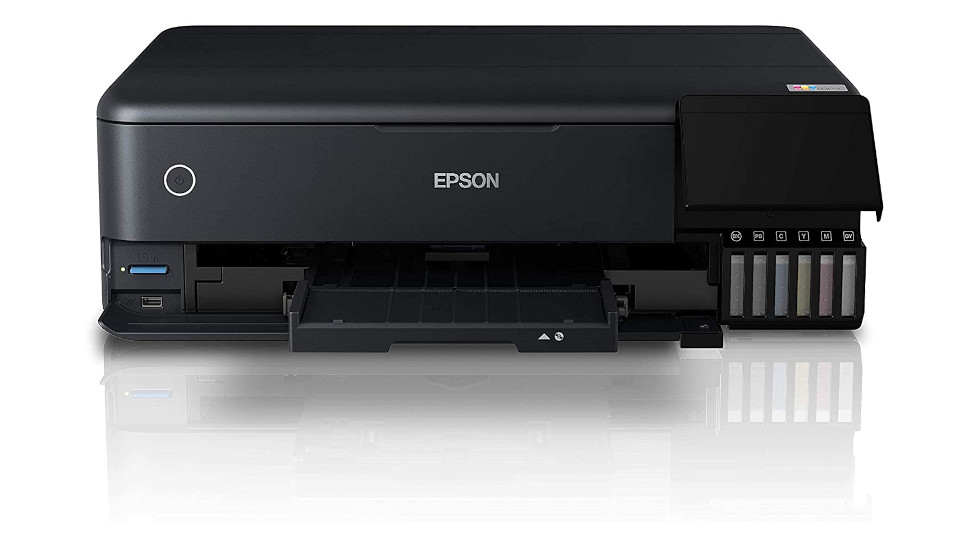
Digital Photo Printer winner: Epson EcoTank ET-8550
Epson has very clearly nailed its colours to the mast in terms of addressing the areas of its operation with the potential to contribute to global warming. It’s embarked on a corporation-wide strategy to reduce its carbon footprint that covers all aspects of its operations – manufacturing, offices and products. Epson’s ‘Turn Down The Heat’ campaign is, in one area, targeting inefficient laser printers, urging they be replaced by inkjet printers using its ‘Heat Free Technology. Epson says these printers use 96% less energy and power than a comparable laser printer when print A4 colour (and this survey covered 54 competitive laser devices).
However, perhaps a more tangible way for photographers to make a contribution is via Epson’s EcoTank printers, which replace the highly wasteful one-shot disposable cartridges with refillable ink reservoirs. The first EcoTank models were designed for home office use, but now there are a couple of six-colour photo printers, including the A3+ format ET-8550. While Epson is also promoting the potential savings in ink costs over the long-term for the enthusiastic printer, it’s really more the environmental considerations that make the EcoTank photo printers well worth the extra outlay required to make the initial purchase. Epson estimates that the supplied set of ink bottles is the equivalent of 185 individual cartridges and that’s a lot of plastic not ending up in landfill (given many users don’t use recycling for one reason or another). There are definitely savings to be made – printing costs are extraordinarily low with the ET-8550 – but you’ll need to be fairly prolific in your output to realise them in a reasonable time frame. It’s also worth remembering that these printers are also designed to last longer, which also has environmental benefits in one way or another.
Nonetheless, Epson has done a lot to make the ET-8550 an attractive proposition versus its convention cartridge based rivals. The new generation of ‘Auto Stop’ ink bottles are designed to make for easier refilling of the printer’s tanks (previously a task with the potential for messy spillages), and the Claria ET Premium work particularly well when making colour prints on glossy papers… although the ET-8550 performs equally well on matte and fine-art papers too. There’s the flexibility of support for media up to 300gsm in weight, custom print sizes up to a panoramic two metres in width, a host of connection options and a built-in SD memory card reader. Additionally, this is a multi-functional printer so you get an A4 flatbed scanner and a photocopier thrown in for good measure.
The average cost reductions are in the order of a tenth and you really don’t have to worry about volumes (at least not for a good while). Above all else, it’s freedom from all the hassles and expense of conventional ink cartridges – while also reducing the environmental impact – that’s the most compelling reason for buying this printer. It’s an investment, albeit small, in the future.
See Epson EcoTank ET-8550 review
Read more:
Best cameras in 2021
Best lenses to buy now
Australian Camera is the bi-monthly magazine for creative photographers, whatever their format or medium. Published since the 1970s, it's informative and entertaining content is compiled by experts in the field of digital and film photography ensuring its readers are kept up to speed with all the latest on the rapidly changing film/digital products, news and technologies. Whether its digital or film or digital and film Australian Camera magazine's primary focus is to help its readers choose and use the tools they need to create memorable images, and to enhance the skills that will make them better photographers. The magazine is edited by Paul Burrows, who has worked on the magazine since 1982.
